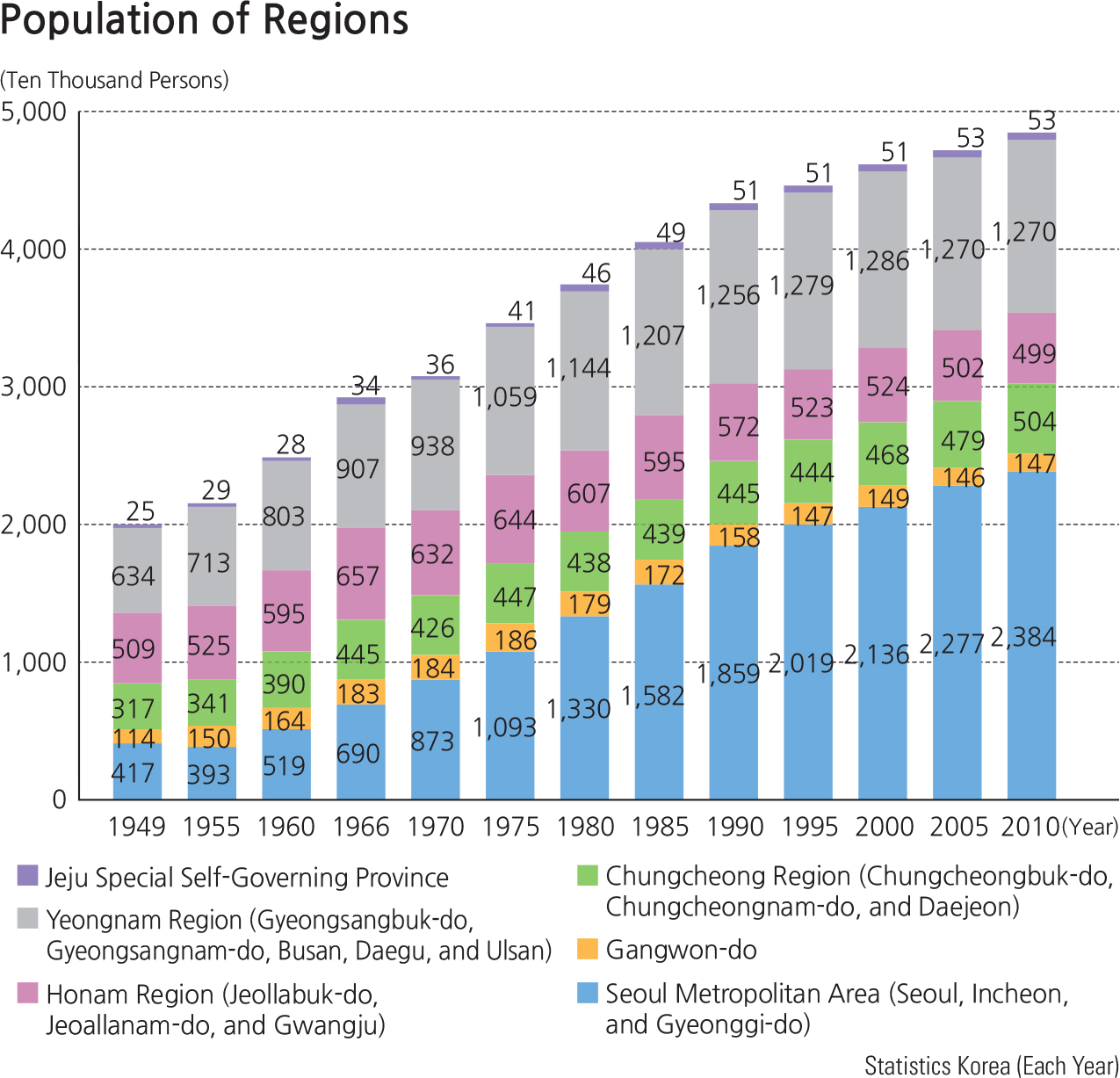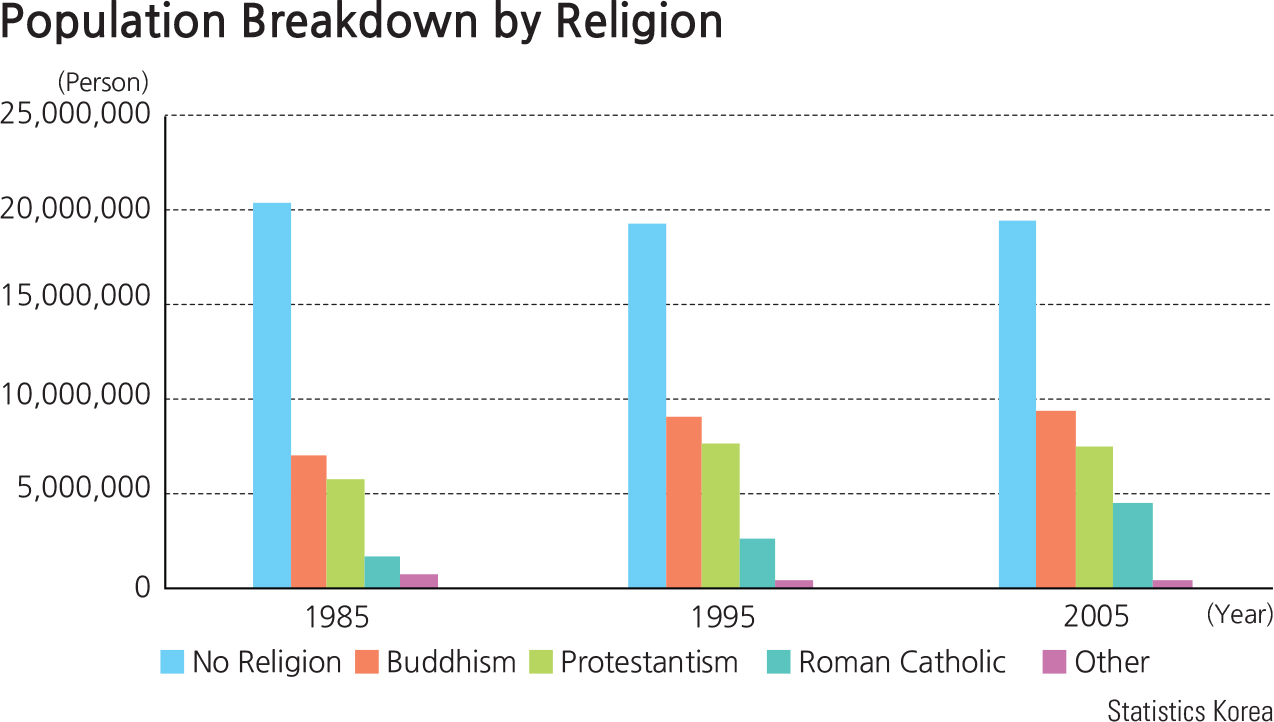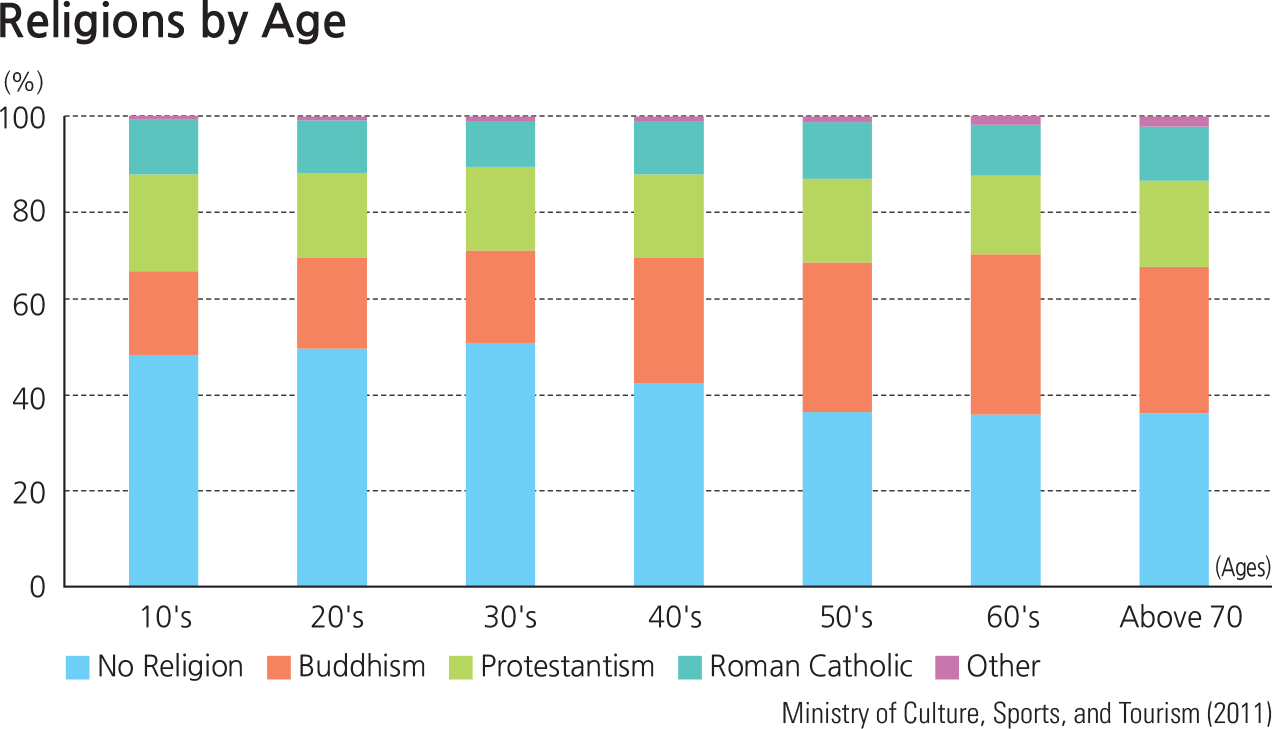for Children
Korea’ population has grown rapidly over the last century as shown in the numerous graphs on these pages. Population almost doubled from 1960 to 2010. Beginning in the 1960s many people migrated from rural to urban areas, resulting in massive population growth in the cities until the early 1990s. Seoul, for example, had a peak population in 1992. While the total number of people increased, there was also a big shift in the size of different age groups, or the population age distribution, as visualized using the population pyramids shown below. These are called population pyramids because the shape of many age distribution graphs resembles that of a pyramid. In 1960 young people outnumbered older people. The largest age group was that of the 5-9 year-olds. By 2010, the largest group was middle-aged, 40-44 year-olds. In 1960 fewer people reached old ages. The average life span was shorter and few lived beyond 70. In 2010 many more lived beyond 70 years, especially women. There were few children however. The shift in age distributions is a pattern typical for many countries during the 20th century. Korea’ population is now aging at the fastest pace in the world due to a plummeting birth rate and extended life expectancy.
The social life of Koreans has rapidly shifted from the family and village-oriented community of the past to an urban way of life. These changes were accompanied by changes in other ways of life. In the past, the most common household was composed of five or more people sharing a home. There were very few single-person households. Now the situation has reversed and almost half of homes have only one or two people. And while in the past, several generations—randparents, parents, and children—hared a home, today it is much less common for a household to have more than two generations living together.
|







